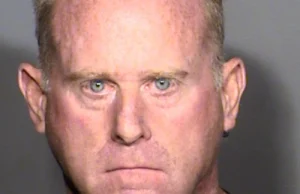The outstation COVID-19 patients are being brought to Delhi in ‘very sick state’ for treatment and the ‘time-lapse’ in transferring them to hospitals could be among the factors behind the high numbers of deaths from coronavirus infection in the last few days, say experts.
Deaths reported in the national capital now are “mostly of patients aged 60 and above with co-morbidities”, said doctors at leading government facilities and private hospitals in Delhi.
Around 46 people died from COVID-19 in Delhi on Saturday, the highest in over 70 days, taking the death toll to 5,193. The coronavirus tally in the national capital now stands at 267,822.
The cases of coronavirus have seen a spike in Delhi since early September, with 4,473 new infections registered on the 16th of this month, the highest-single day spike.
Also Read | Delhi has witnessed COVID-19 second wave, says CM Arvind Kejriwal
From September 9-19, fresh cases were recorded in excess of 4,000 per day except on September 14 when the figure stood at 3,229 with 26 deaths being recorded that day, according to official data. However, since September 20, fresh cases have remained below the 4,000-mark.
The daily fatalities count from September 15-24 was recorded in excess of 30 on all days. Only on September 25, it stood at 24, jumping again to 46 the next day.
Also Read | Delhi reports over 190% rise in active COVID-19 cases in a month
Medical Director, Rajiv Gandhi Super Speciality Hospital, Dr B L Sherwal, when asked about why death cases are rising when daily cases are now falling said, “a large number of patients coming to Delhi are from neighbouring cities or states and are being brought in a very sick condition, so again the survival rate is low.”
The seven-day average of daily COVID-19 cases in India has been gradually declining for nine consecutive days from September 17-26, the first time such a phase of continuous fall has been recorded since the outbreak of the pandemic, according to a report, which cites data from European Centre for Disease Prevention and Control (ECDC).
“The number of deaths being reported in excess of 30 in the past few days or 46 yesterday, can be attributed to two major reasons — most of the patients who are dying are in 60s, 70s, 80s or 90s, and the victims are mostly those who had co-morbities,” he told PTI.
The average COVID-19 death rate in Delhi for the last 10 days stands at 0.94%, according to the Saturday health bulletin.
Dr Suranjit Chatterjee, senior consultant, Internal Medicine at Apollo Hospitals, said outstation patients from Haryana, Madhya Pradesh and other places are being brought to the facilities here in “a very sick condition”. He added that patients from Delhi are also being brought in such a state.
“If they are already sick, and have travelled such a long distance, despite the best efforts of doctors and standardised treatment protocols many of these patients die, especially those with co-morbidities whose condition can deteriorate suddenly,” he said.
Chatterjee also conjectured that “time-lapse” in transferring old patients from home isolation to a hospital could be leading to deaths of many.
Dr Amarinder Singh Malhi, from the cardiovascular radiology department at AIIMS, when asked about the daily cases, said, “it is too early to say whether we are past the peak”. The cases may have plateaued or decreased a bit, but there is no significant reduction. People need to behave responsibly in the coming months and step out only if there’s an emergency, he said.
Giridhar Babu of the Public Health Foundation of India said there is always a “lag time” in reporting deaths.
“Generally 14-17 days after a surge in cases, one will see a high number of deaths being reported. The surge in cases in Delhi could have started two weeks earlier so because of that surge, whatever the hospitalisation-related complications happened are being seen now. If the surge in cases continues, you will have to observe the number of deaths also,” he said.






